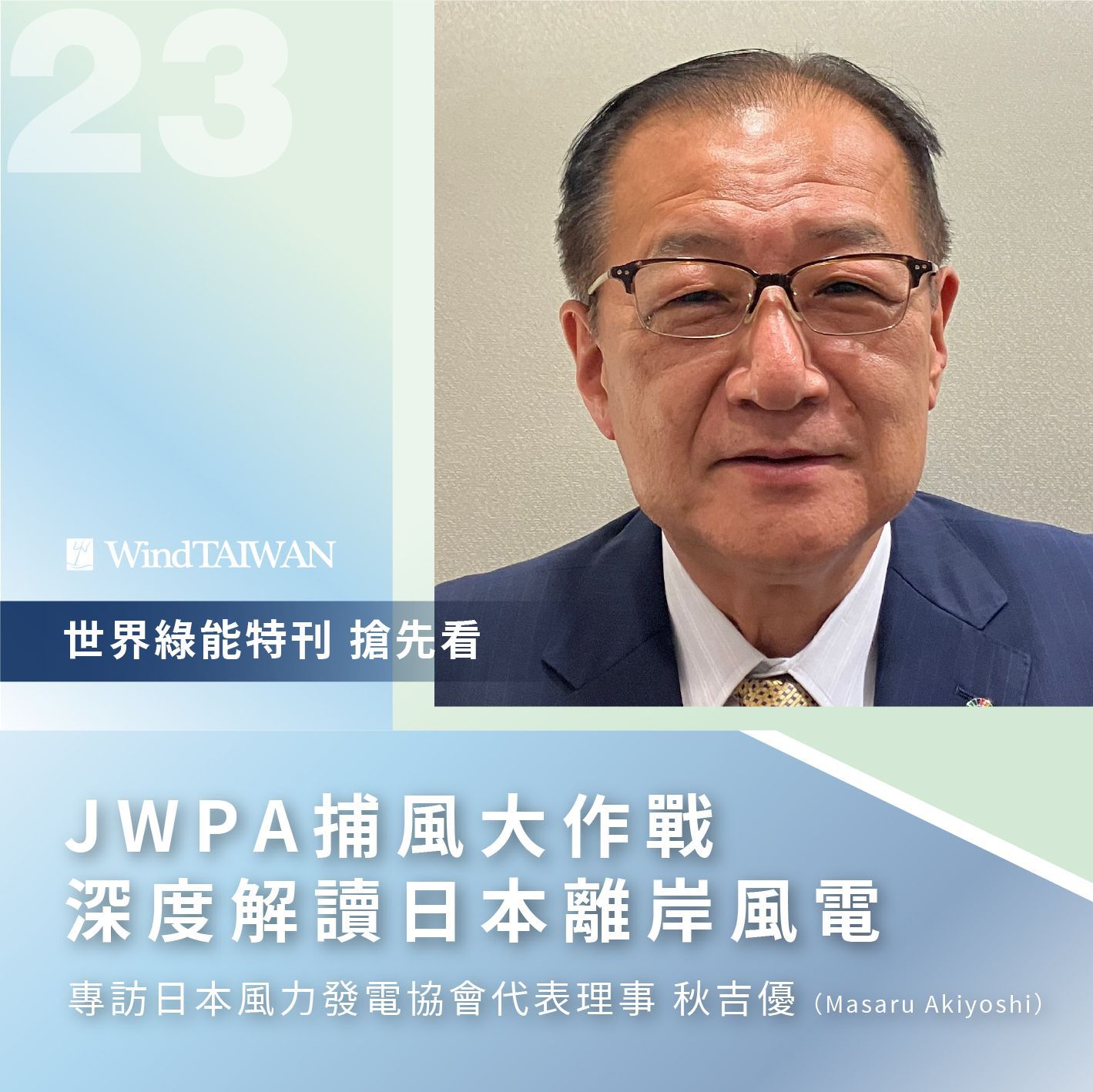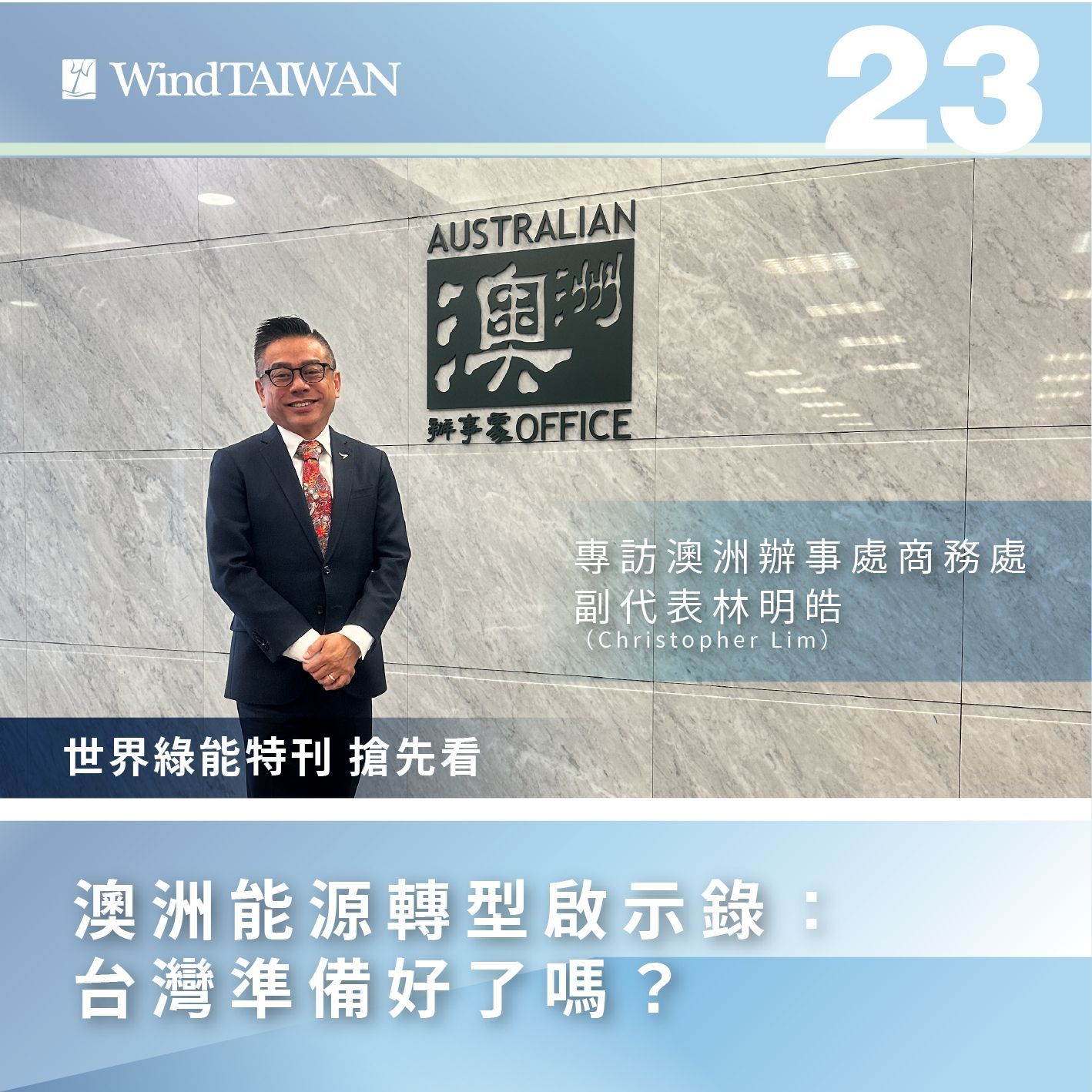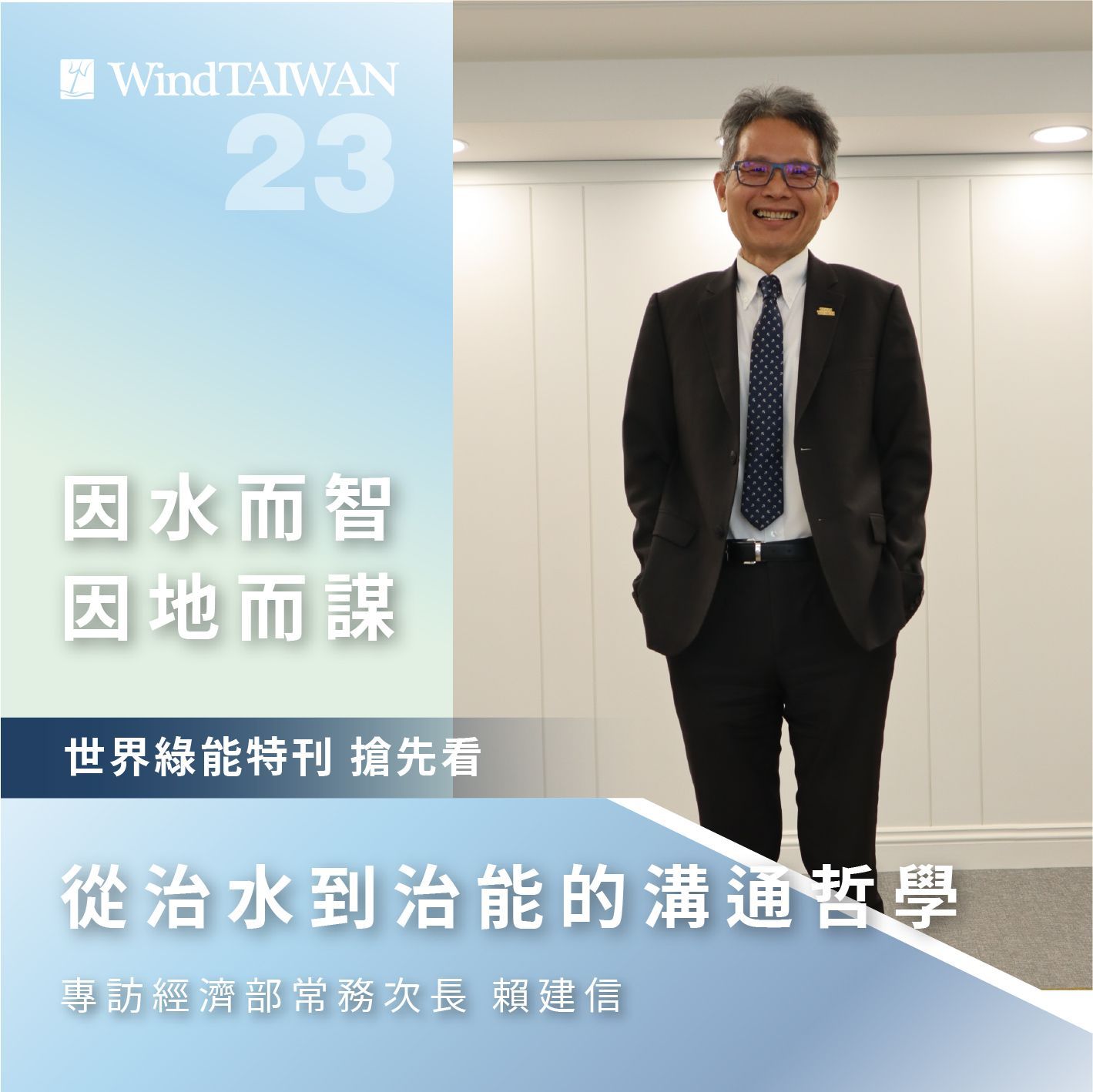Read more:
Wind or Window of Opportunity? - Japan’s Offshore Wind Journey and the Lessons for Asia
2025/10/08

Interview with Masaru Akiyoshi, Chairman, Japan Wind Power Association (JWPA)
Since the enactment of Japan’s Basic Act on Energy Policy in 2002, the country’s energy strategy has revolved around the “S+3E” principles: Safety, Energy Security, Economic Efficiency, and Environmental Sustainability. These principles have guided the formulation of Japan’s Basic Energy Plans, which are revised every 3–4 years. The latest, the Seventh Basic Energy Plan, was unveiled in February 2025.
Among the key pillars of this policy is offshore wind power, now positioned as a national strategic priority. Japan has set ambitious targets: 5.7 GW of installed capacity and 10 GW of project formation by 2030, and 30–45 GW by 2040.
At the forefront of this effort is the Japan Wind Power Association (JWPA), a leading industry body representing the entire wind power value chain—from turbine manufacturers and power utilities to EPC contractors, O&M providers, and consultants.
As of August 2025, JWPA consists of 485 members, including 285 full members, 180 supporting members, and 20 local government members.
According to Masaru Akiyoshi, JWPA Chairman, as of 2025 Japan has achieved 5.1 GW of “project-formed” offshore wind capacity. However, only 0.3 GW is currently operational; the rest has not yet begun construction. Most developers are just now entering the procurement phase for turbines and critical components.
Japan’s first offshore wind auction was held in 2021, awarding four projects—totaling 1.7 GW—in locations such as Goto (Nagasaki Prefecture) and Yurihonjo (Akita Prefecture). However, the execution phase coincided with the outbreak of the Russia–Ukraine war, triggering global inflation, surging material costs, and a sharply devalued yen. These macroeconomic shocks have placed enormous pressure on project viability.
Given that most equipment is priced in foreign currencies, Japanese developers have faced a “double hit”—rising global prices and unfavorable exchange rates. This has created a serious mismatch between original financial models and actual project costs.
In response, the Japanese government is considering introducing a “Price Adjustment Mechanism” starting from the fourth auction round. This mechanism would allow for electricity price adjustments based on inflation between the bidding period and actual procurement. In effect, it would provide a lifeline for developers struggling with unforeseen cost hikes.
However, this system is still under deliberation and not yet part of official auction guidelines. Industry voices are calling for the mechanism to be retroactively applied to the first three auction rounds, but questions remain over its scope, timing, and the appropriate inflation indices. These details will likely be shaped through continued dialogue between government and industry.
Japan’s offshore wind industry is facing a convergence of challenges: a gap between policy targets and ground realities, volatile exchange rates, inflation, and the restructuring of global supply chains. Yet, if Japan can construct a resilient and adaptive system to overcome these hurdles, it may serve as a valuable model for Taiwan and other Asian countries navigating their own energy transitions.
This content was published on WindTAIWAN and is shared in collaboration with ENERGYNIPPON.






